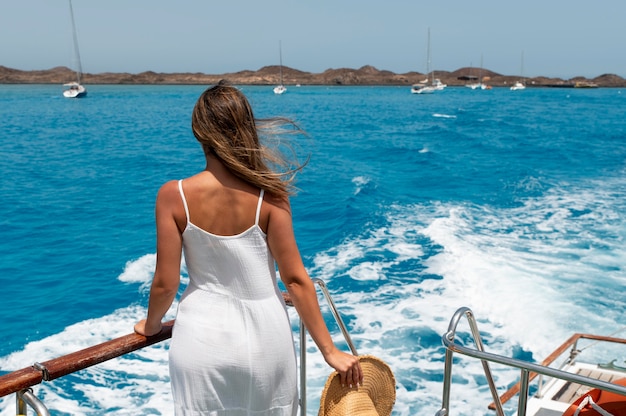A Journey Through Messina and Taormina – Day 5 on My MSC Mediterranean Voyage

On the fifth day of our Mediterranean cruise with MSC Cruises, we arrived in Messina, Sicily, and took a trip to the charming town of Taormina, famous for its Greek theatre. Taormina is about a 45-minute drive from the cruise port and offers a great view of Mount Etna, Europe’s most active volcano, which often glows or puts on a natural firework display at night. Just last year, Taormina experienced a shower of ash from Mount Etna, and our guide pointed out the black rock peninsula below the town, formed by an ancient lava flow.
Taormina has always been strategically important in Sicily because it overlooks the shipping routes towards the Straits of Messina. Founded by the Greeks in 350 BC, the town once boasted five temples and a theatre at the height of its wealth. Over the centuries, it was dominated by the Romans and later invaded by the Arabs, Normans, French, and Spanish, creating a rich cultural mix.
In Roman times, Sicily was known for its fine wines and thriving olive and almond trees. The Arabs introduced aromatic plants, coffee, lemons, and sugar, which are now used in Sicilian specialties like lemon granita, sweet almond liqueur, and colorful marzipan fruits found in Taormina’s shops. Locals often start their summer mornings with a coffee granita and enjoy pastries called cannoli, filled with sweetened ricotta cheese.
Taormina is divided into two parts: the hilltop area we visited and Taormina Mare by the sea, where the train from Messina stops. A funicular connects the two areas. We entered the old town through Porta Catania, facing the city of Catania, while the gate at the other end, Porta Messina, faces Messina. In the first small square, we saw a church and a central fountain topped by Taormina’s symbol, a centaur, half woman and half horse. Our guide showed us the old town hall, flying the European, Italian, and Sicilian flags, as Sicily has its own constitution and parliament. The Sicilian flag features a symbol with three legs representing the island’s three points, with a Medusa head at the center.
We strolled down Corso Umberto, a narrow street lined with shops selling fashionable clothing, hand-painted ceramics, pastries, and marzipan sweets. Many old houses had Spanish-style wrought iron balconies, and our guide explained that this part of town dates back to the Middle Ages. The second square, known as Panorama Square, offers a stunning view over the sea and lower town towards Mount Etna. This area marks the start of the original Greek part of town, leading to Piazza Victor Emanuale, the site of the Greek agora and later the Roman Forum. The pedestrianized street made for a pleasant walk down a slight hill to the square where Palazzo Corvaja is located. This building, developed over centuries by the Romans, Normans, and Arabs, served as a private residence and a parliament building, and now houses the tourist office and a museum.
From there, we headed up the hill to the Greek Theatre, one of Taormina’s main attractions. Built by the Greeks in the 3rd century and later expanded by the Romans, the theatre’s capacity increased from 5,000 to 7,000 people. The audience enjoys the best view in town, looking over the sea towards Mount Etna, framed by the arches at the back of the stage. The theatre hosted Greek plays and later Roman gladiatorial contests and wild animal fights. It is still used in the summer for opera, ballet, and other musical productions, attracting well-known Italian and international artists. The acoustics are so perfect that even those in the cheap seats at the top can hear as well as those in the front rows.
As our tour ended at the Greek Theatre, we had 45 minutes to wander back through the town, enjoying the shops and stopping for a gelato, though I wished for another hour to explore more thoroughly.
Back on the ship, I had a relaxing facial treatment at the Aura Spa. Lying on the treatment bed, covered in a towel, with soft lights changing color and soothing music and birdsong around me, it was easy to drift off. Only the occasional cool cream or hot cloth brought me back, and I left with my skin feeling beautifully soft and smooth.
Tomorrow, we leave Europe and head to Tunis, where we plan to explore the ancient site of Carthage and the picturesque coastal village of Sidi Bou Said.